What Animals Did Europe Bring To America
What Animals Alive In Europe?
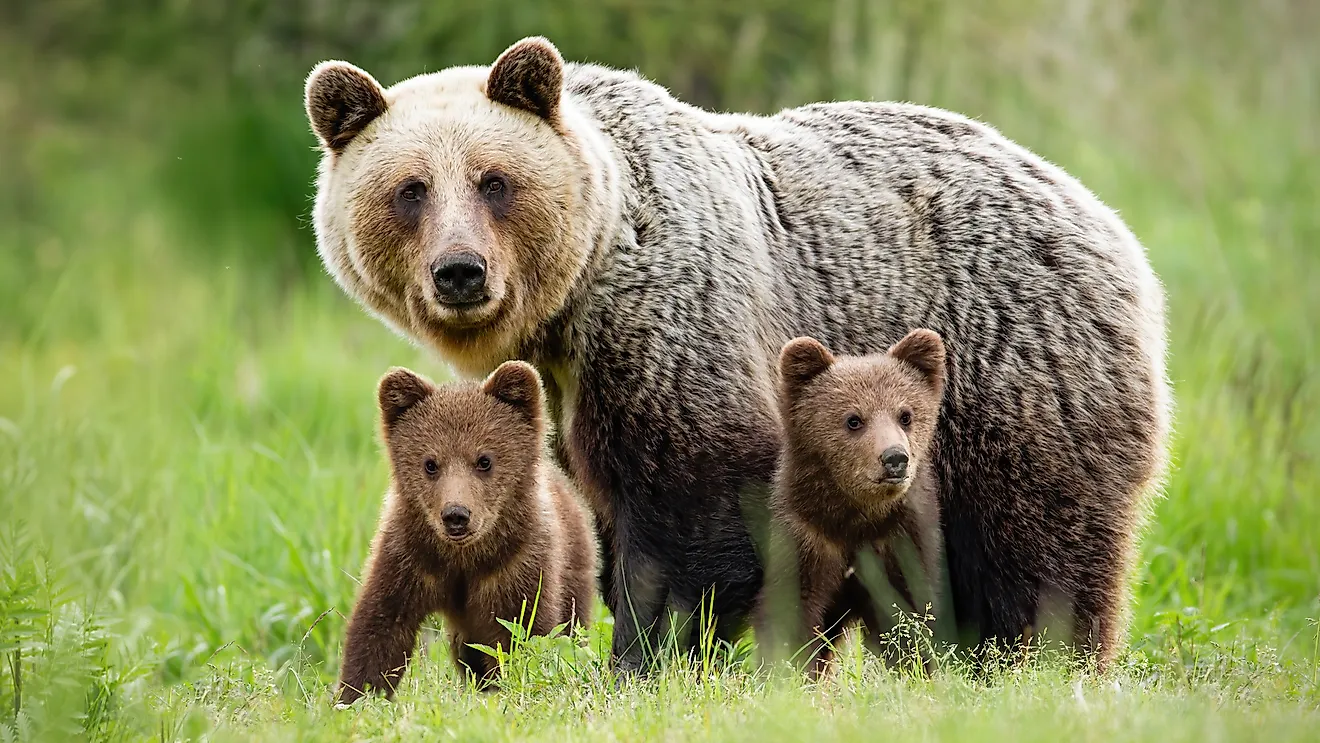
- The Bern Convention on the Conservation of European Wild animals and Natural Habitats is a legal instrument that aims to protect and preserve Europe'due south natural heritage and its flora and beast.
- Europe'southward well-nigh popular wild fauna recovery success is the comeback of the European bison. These mammoth creatures were pushed to extinction in many parts of Europe at the first of the century because of poaching but thanks to conservation efforts, they are now being reintroduced to the wild.
- The third-largest predator in Europe, side by side to the bear and wolf, is the lynx found in Northern, Cardinal, and Eastern Europe every bit well equally Key Asia and Siberia, the Tibetan Plateau and the Himalayas.
A lot has been discussed about the majestic animals of the African safari or the unique creature of the rainforests in South America that many wonder how animals live in other parts of the world. Civilization and progress may have driven their wild fauna to more remote areas but with a plethora of natural and semi-natural habitats—from tundras to maquis—Europe is abode to interesting fauna too.
Of the 270 species of mammals found in the continent, 78 are owned. In that location are over 800 species of birds in Europe. 75 amphibian species including 56 endemic ones also phone call the continent their home. 344 species of fresh-water fish abound in Europe'due south water bodies. Of these, 200 are found simply in the continent. Over 100,000 invertebrate species are also constitute there. Reptilians diversity includes both venomous and non-venomous snakes, lizards, turtles, etc.
Below are listed some of the iconic species found in Europe:
European Bison
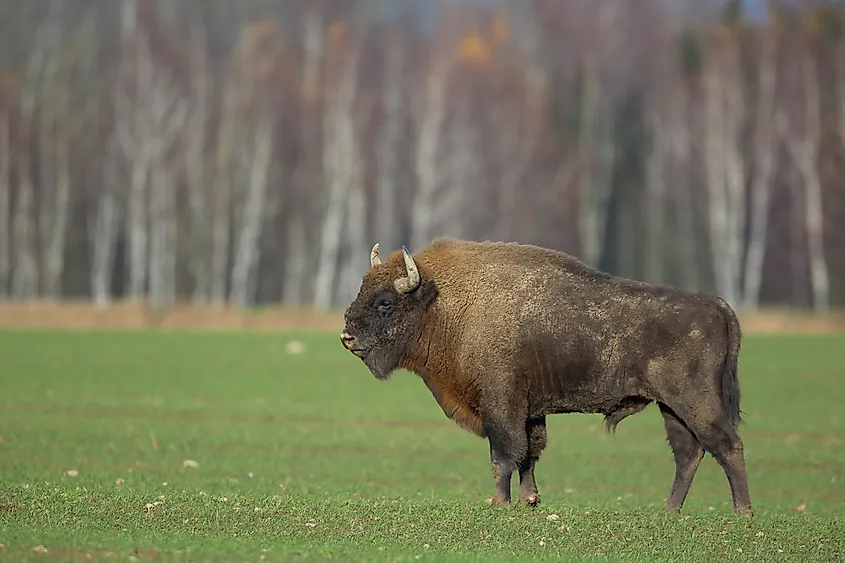
The European Bison, scientific name Bison bonasus, is besides known as the wisent or zubr locally. They were hunted to extinction at the beginning of the century—the final populations of which were gunned down in the Białowieża Forest in 1919 and Western Caucasus in 1927. But thanks to conservation efforts, they have now been rescued from the brink of total extinction in other areas and are existence reintroduced to their habitats throughout the continent. They can be found throughout western, central, and southeastern Europe.
Brown Bear
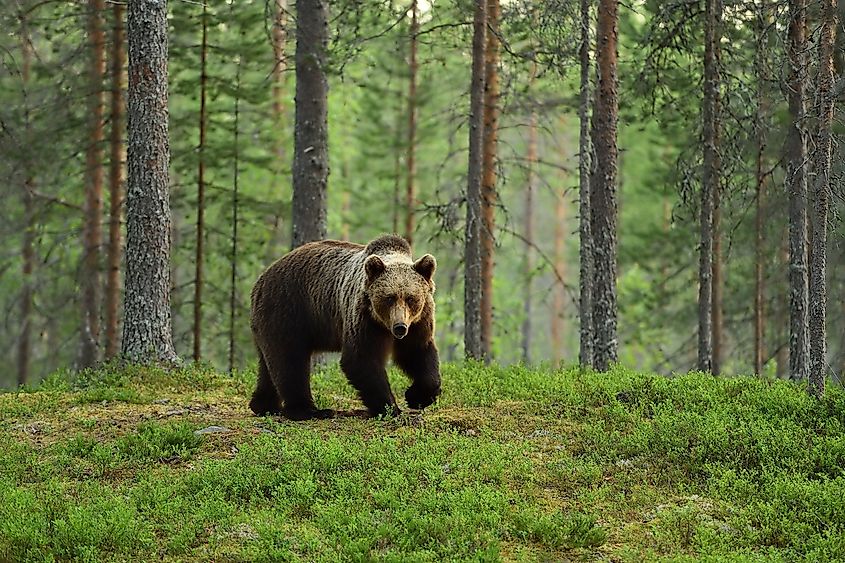
While these giants accept long been extinct in Ireland and U.k., some populations however roam in some parts of Europe including the Balkans and the Carpathian Mountains. A pocket-sized population can likewise exist found in the Pyrenees, the Alps, and the Apennines. Known by its scientific name Ursus arctos, the European brown conduct is constitute mostly in Eurasia. Although brown bears, in general, are not listed as endangered, their habitats are continuously shrinking due to human being activity. Many of them fall victim to massive poaching.
European Tree Frog
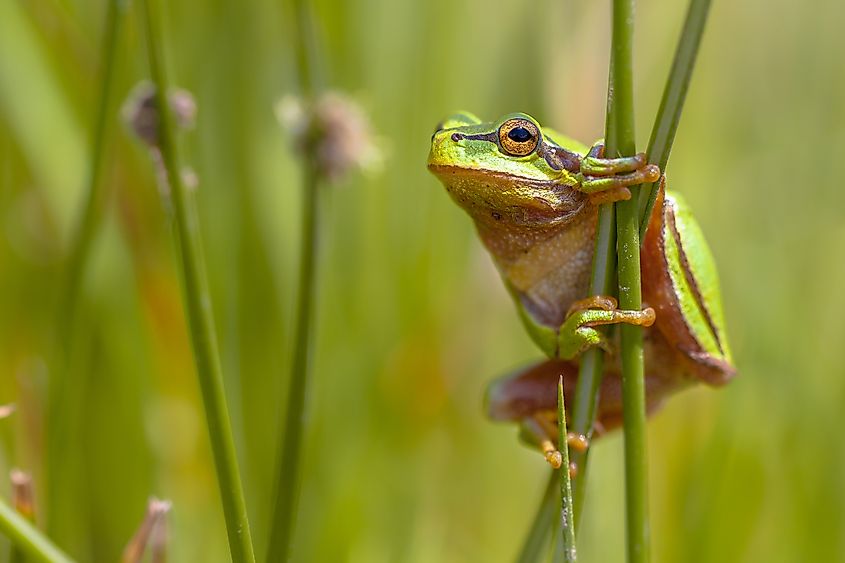
The Hyla arborea, commonly known as the European tree frog, is a modest species of tree frog that tin grow only betwixt 3 to v centimeters. They inhabit the insular forests and dense vegetation of floodplains, in marshlands, stream banks, and lakeshores beyond Europe, Asia, and Northern Africa. They are listed as of least concern on the IUCN Redlist, but their population seems to evidence a steady pass up in recent years due mainly to habitat loss.
European Shag
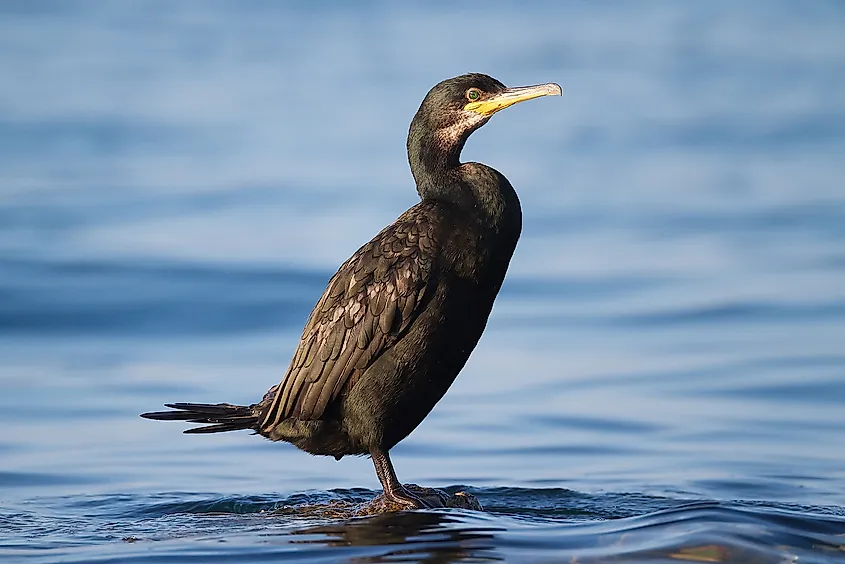
The European Shag, scientific proper name Phalacrocorax Aristotelis, is a long-necked bird about the size of a goose. They are found throughout Europe—in Norway, Greece, Ukraine, Iceland, and Portugal. In the UK populations are found in the coasts of Wales and South W England (particularly Devon and Cornwall). In that location has been a decrease in its population although it is not currently considered endangered and is included in the listing of animals of least concern.
European Pine Marten
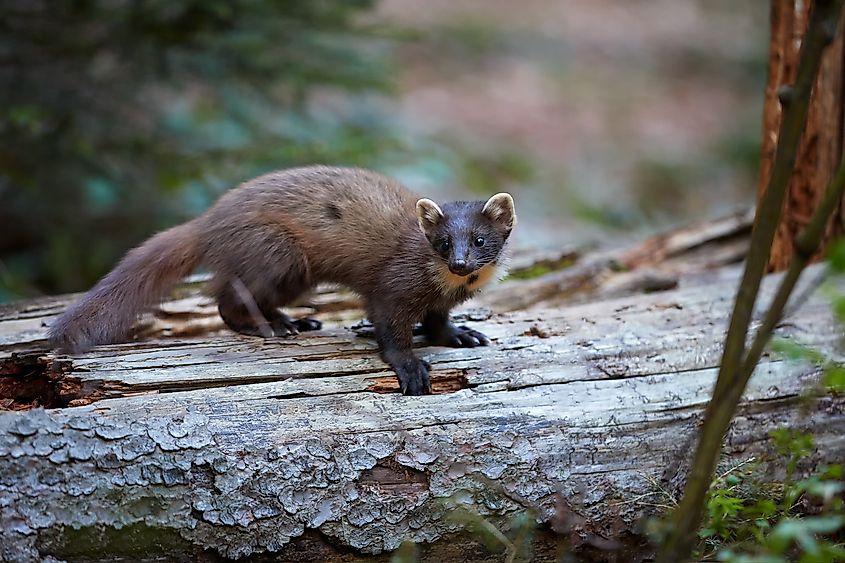
European pino marten. Prototype credit: Martin Mecnarowski/Shutterstock.com
The European pine marten, scientific name Martes martes, is also known as sweetness marten. Native to Northern Europe, these small agile animals can also exist constitute in the forests of Central Europe as well as some parts of Asia. In the UK they tin can be institute generally in Scotland simply a few live in some areas in England. While the International Wedlock for Conservation of Nature, considers these animals stable and of least concern in nearly parts of Europe, in Britain populations are dwindling fast that merely a tiny population remains in the forests of Wales and northern England.
European Greenish Lizard
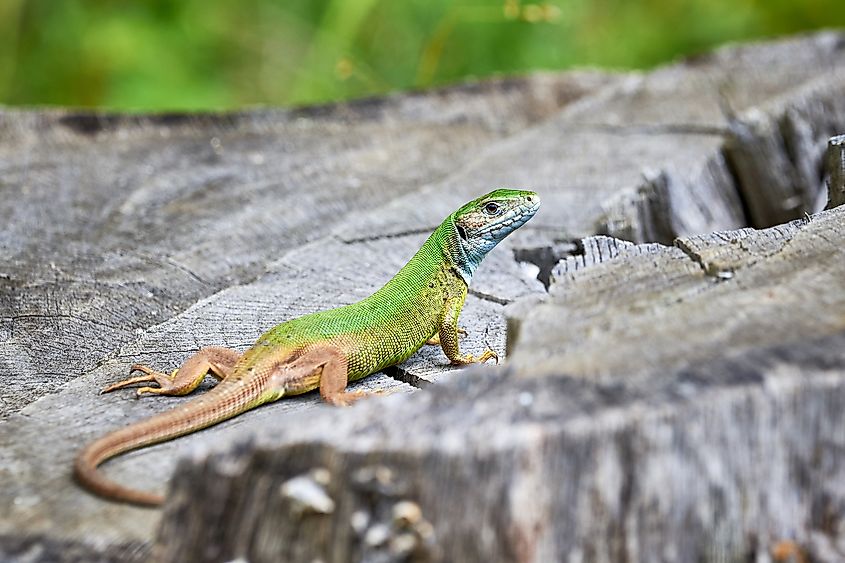
This large lizard commonly known as the European green lizard, scientific proper name Lacerta viridis, is plant throughout Europe. It is native to Southeastern Europe merely can likewise exist found in Eastern Austria, Frg, Republic of hungary, Italian republic, Croatia, Serbia, Republic of albania, Romania, Ukraine, and Hellenic republic among other areas. The IUCN lists theEuropean green cadger every bit being of to the lowest degree business since a large population still thrive in the wild across Europe today.
Eurasian Lynx
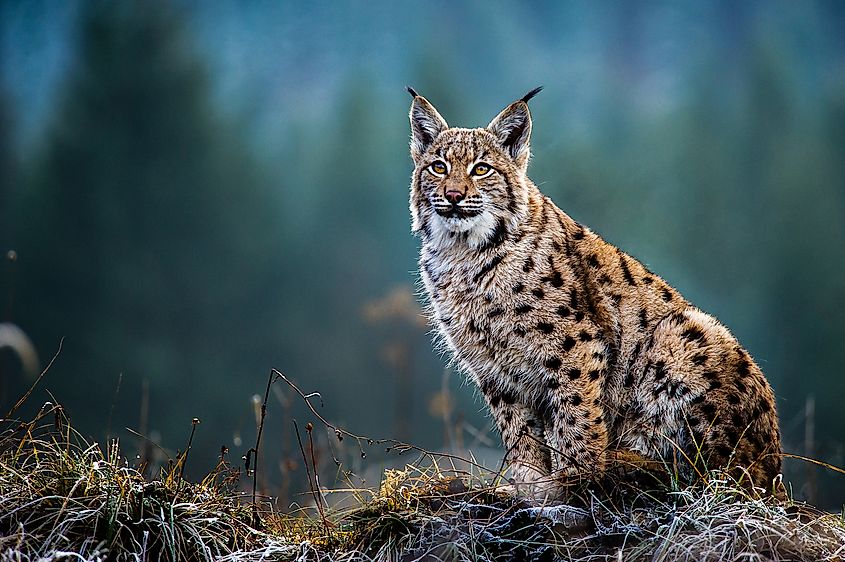
This medium-sized feline, scientific name Lynx lynx, is the third-largest predator in Europe adjacent to the brownish carry and the wolf. The lynx can exist found in Northern, Central, and Eastern Europe likewise every bit Primal Asia and Siberia, the Tibetan Plateau and the Himalayas. At the beginning of the century, these animals take gone extinct in some parts of Europe due to unabashed hunting and habitat destruction. Although repopulation efforts have brought them back in countries like Switzerland albeit as of today, their populations remain modest.
Greater Spotted Hawkeye
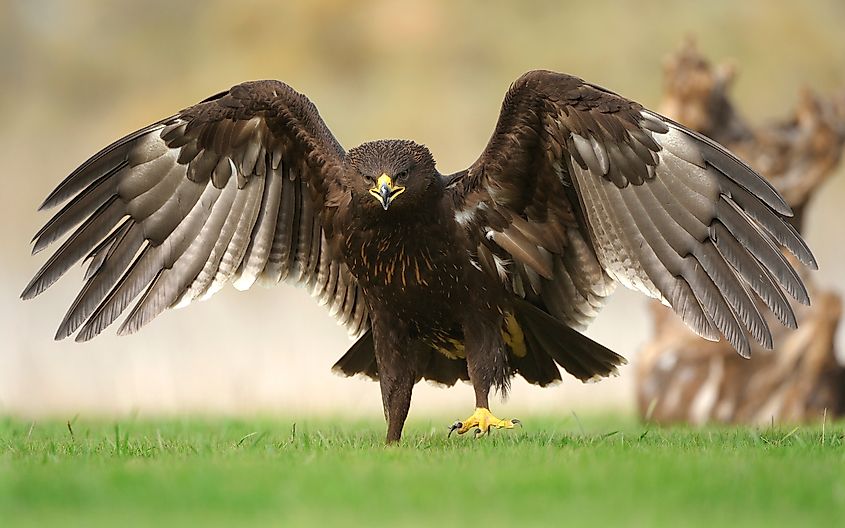
A greater spotted eagle. Prototype credit: Vladimir Kogan Michael/Shutterstock.com
The Greater Spotted Eagle, scientific proper name Aquila clanga, is a migratory raptor that lives across Europe and migrates to the Center East and Asia during winter. In Europe, they are classified as endangered with less than 1000 pairs remaining in the wild. Around 16% of Europe's population occurs in Belarus and 4% in Ukraine, according to wildlife conservation grouping Polesia Wilderness Without Borders.
Common European Viper
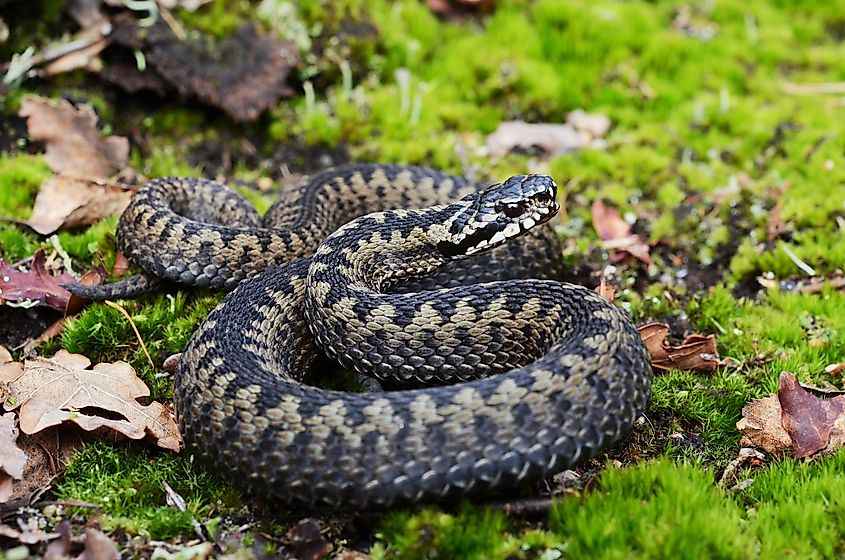
The Vipera berus commonly known as the European adder or Common European viper is 1 of the most venomous snakes in the wild. Although they are non particularly unsafe since they simply bite when provoked or picked upwards. They mostly alive in the Due north of the Chill Circle in Europe, Western Europe, and Eastward Asia and are the only venomous snake native to Uk according to the Britain Forestry Commission. While they are listed among those of least concern by the IUCN, in Britain these species are protected since they are believed to be facing extinction and could disappear by 2032 if no interventions are put in place.
Moose
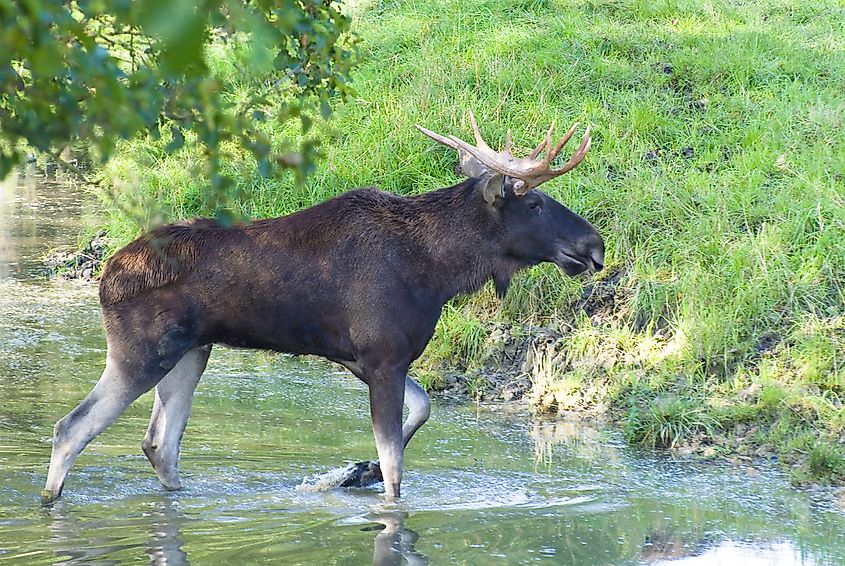
A moose in a lake. Image credit: Stefan Simmerl/Shutterstock.com
The European Moose, scientific name Alces alces, is known every bit elk throughout Europe. They can be found all over Sweden, Republic of latvia, Republic of finland, Estonia, as well every bit some parts of the Balkans, Italy, and Poland. Thankfully elks are not considered endangered according to the International Union for Conservation of Nature's (IUCN) Cherry List, because populations are thriving in many parts of the earth. Although in Europe some populations are dwindling mainly due to hunting. Many are getting gunned down or hit by cars on roads in Key Europe.
Threats To Europe's Wildlife
Urbanization, agriculture, mining, and deforestation among other factors have caused many natural habitats in Europe to shrink. While others like the Saiga tatarica and tarpan were pushed to extinction, many big animals similar the bison and lynx retreated to what'south left of their natural habitats away from human invasion.
To mitigate the effects of urbanization on Europe'south wildlife population, many countries have taken measures to protect the animals inside their territories. Numerous non-profit organizations in Europe also work tirelessly to conserve biological diversity and protect natural habitats all over the continent.
Agreements accept been forged betwixt European union countries that have in turn pledged to protect the continent's wild fauna variety.
The Bern Convention
The Bern Convention on the Conservation of European Wildlife and Natural Habitats is a legal instrument that aims to protect and preserve Europe'south natural heritage as well as its flora and fauna. Signed in 1979, it became the first international treaty to bring together various countries to protect both animals and their habitats.
50 countries equally well equally the European Union have signed the agreement and pledged to back up national conservation measures and policies, aid conservation research, and promote the education or information dissemination well-nigh wildlife conservation.
The first of its kind worldwide, this Bern Convention, as well aims to protect endangered migratory animals and encourage countries to integrate wildlife conservation into their national planning and evolution policies. Countries that take signed the understanding are given sure obligations that move towards the protection of their flora and fauna every bit well as their habitats in their territories. All of them are expected to promote national conservation policies, establish legislative and administrative measures to conserve wildlife, co-ordinate efforts to protect migratory species, adopt measures against pollution, regulate human activeness that can destroy habitats and put animals at run a risk.
Forty years later its adoption, many countries in Europe accept successfully brought back animals from the brink of extinction.
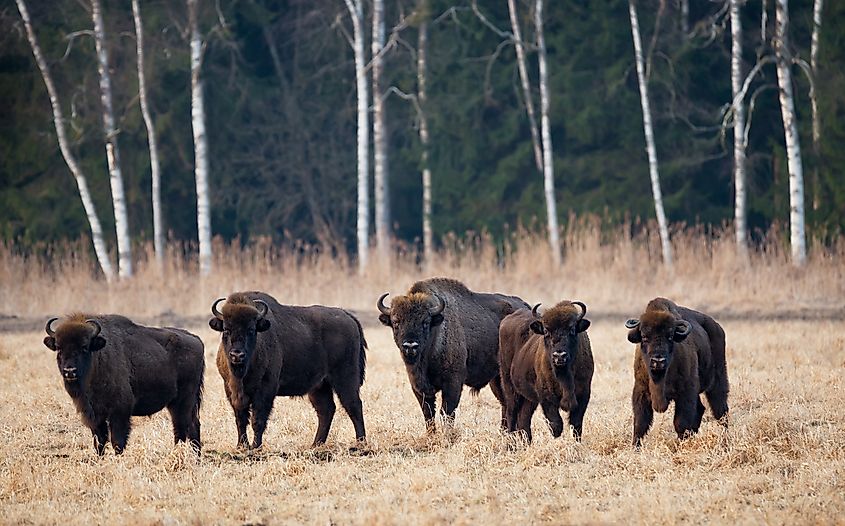
Europe's most pop wild fauna recovery success is the comeback of the European bison. These mammoth animals were pushed to extinction at the start of the xxth century due to massive habitat loss and unfettered hunting. Thanks to the efforts of many organizations, scientists, and conservationists, the bison was rescued from extinction and is at present being reintroduced to their natural habitats across Europe. Free-ranging bison herds are now found in countries like Switzerland, Deutschland, Poland, Lithuania, and Belarus.
Source: https://www.worldatlas.com/articles/what-animals-live-in-europe.html
Posted by: southwoodperaweltake.blogspot.com

0 Response to "What Animals Did Europe Bring To America"
Post a Comment